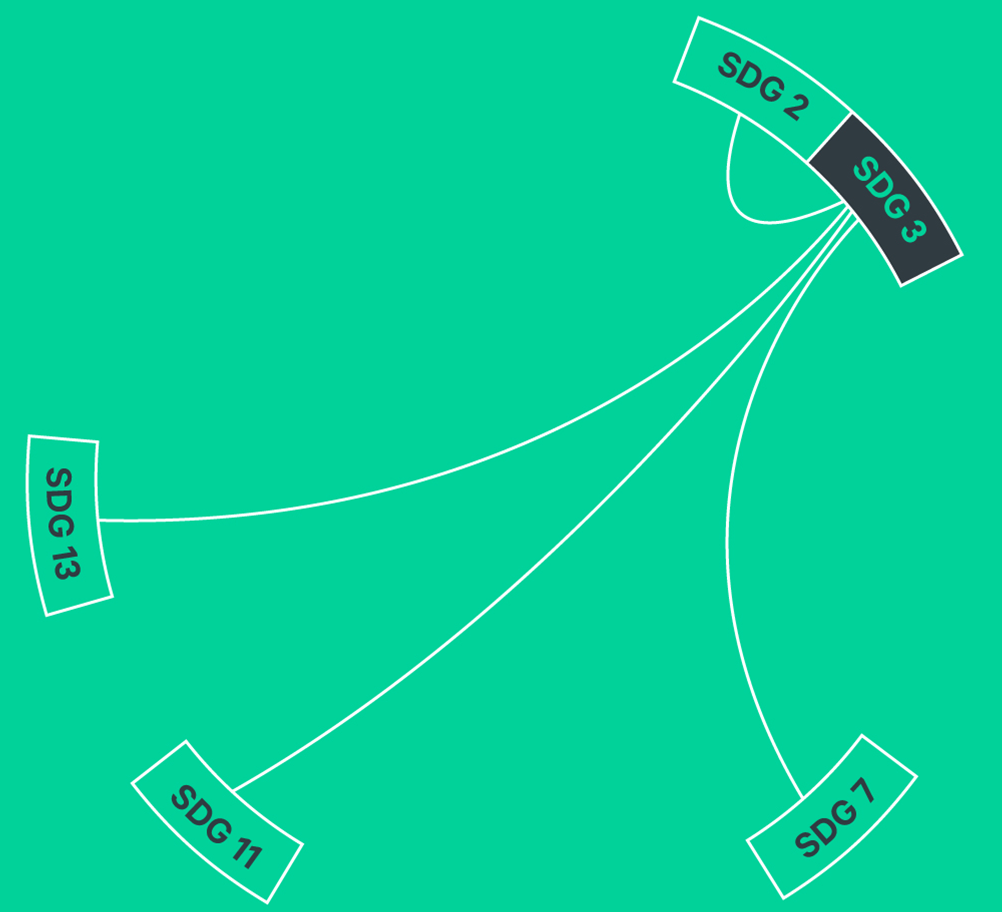This change story was originally published in our 2017 annual report.
SEI’s energy planning tool, LEAP – the Long-range Energy Alternatives Planning system – is used by governments all over the world to help meet their climate commitments under the Paris Agreement. The LEAP team continues to develop the system, to allow policy-makers and other researchers to meet new and ongoing energy challenges, and develop innovative policy. A recent update is the new integrated benefits calculator – LEAP-IBC – which allows the user to quantify the number of premature deaths that could be avoided through reducing emissions, alongside impacts on global temperature.
Premature death is only one of the possible health outcomes of air pollution. LEAP-IBC can be applied to many others and will prove a vital tool for research into a range of health impacts.
LEAP-IBC has been used by organisations in almost 190 countries, and is currently being used by policy-makers and planners in Bangladesh, Chile, Colombia, Côte d’Ivoire, Ghana, the Maldives, Mexico, Morocco, Nigeria, Peru, the Philippines, and Togo. Many governments use the platform to help meet their climate commitments under the Paris Agreement, but many are also using LEAP to integrate health co-benefits into their strategies.
“LEAP-IBC will allow Chile to compare predicted impacts of policies within specific implementation periods, and to use these results to support informed and efficient policy decisions.”
—Priscilla Ulloa, Ministry of Environment, Chile
The Government of Ghana has been using LEAP for more 10 ten years. Simpson Attieku, Senior Energy Analyst at the Ghana Energy Commission, said that the new capacity to measure the health and climate benefits of low-emissions strategies is “creating new links between government ministries”. For example, setting up a soot-free bus system in Ghana would normally be the sole responsibility of the transport ministry, but Attieku found that by using LEAP-IBC, “the health ministry has realised that this is really part of their agenda as well.”
Chile uses LEAP-IBC for national planning on short-lived climate pollutants, and views the tool as vital for assessing the benefits and trade-offs of different policy choices. Initially Chile is focusing on replacing wood combustion heaters and promoting electric buses. Priscilla Ulloa of Chile’s Ministry of Environment said, “Chile’s approach is to address local air pollution and climate change through integrated public policy mitigation actions.”
By showing how climate action and human health are connected, LEAP-IBC is helping countries to meet climate and health goals through joined-up action. Demand for the tool is growing. SEI will partner with Chile, Ghana, Mexico and Peru to develop it further, to make integrated analysis that is more relevant, and easier to apply.
Human wellbeing is one of the ultimate aims of SEI’s work. Our research explores the interconnections between human health and environmental sustainability. Our work has made particular contributions to policies on air pollution, access to sanitation and improving maternal health.

The LEAP platform has been in use for more than a decade, and already makes a significant contribution to improving access to affordable and clean energy (Goal 7), and work to tackle climate change (Goal 13). But LEAP’s potential impacts on health (Goal 3) and agriculture (Goal 2) are only now beginning to be understood. Recent research using LEAP has shown the interconnectedness of health and climate policies, making a clear case for joined-up thinking across government departments. Our work is
also highlighting the kinds of co-benefits this approach could bring.
This is an impact story – a highlight of our work from 2017. This story and a selection of others can be found in our annual report.
SEI annual report / This year’s annual report, ‘An agenda of action’, presents highlights of SEI’s work in 2017.
Design and development by Soapbox.

